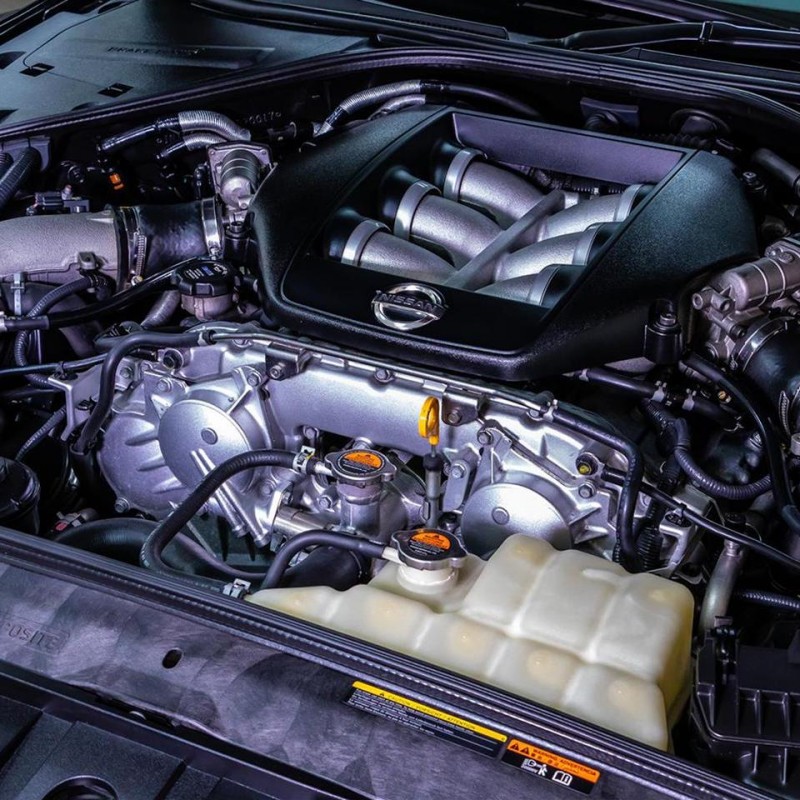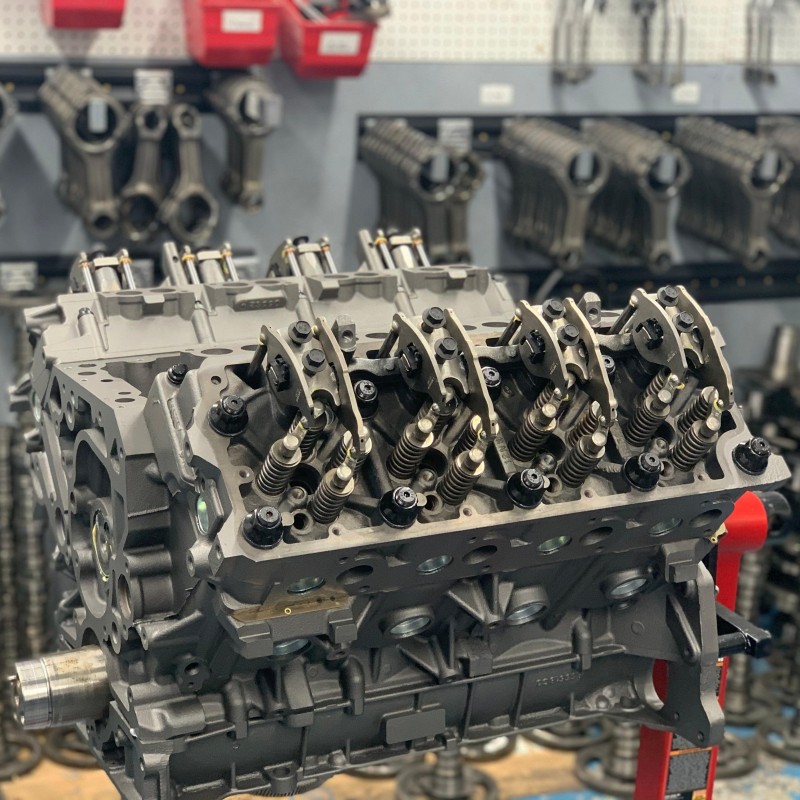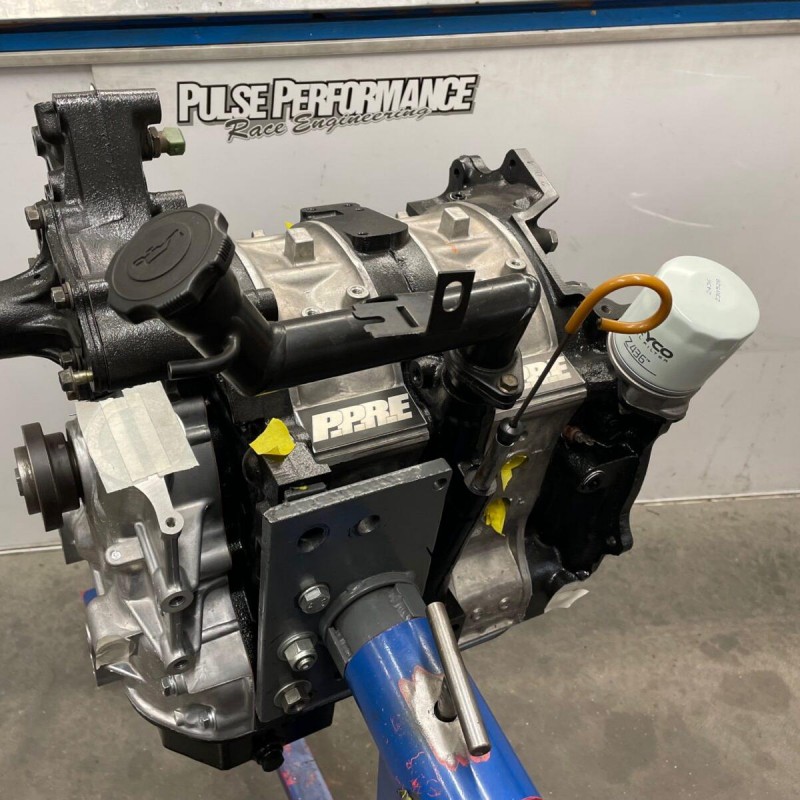Introduction
The engine of your vehicle is akin to its heart, powering each journey and ensuring reliable performance. As with any mechanical system, engines undergo wear and tear over time, potentially leading to serious problems if not addressed promptly. Identifying engine wear early is vital for maintaining vehicle efficiency and preventing breakdowns. Understanding how to identify engine wear can save you money on repairs, extend the lifespan of your engine, and keep your vehicle running smoothly. Various factors influence engine wear, such as oil quality, driving habits, and maintenance practices. In this comprehensive guide, we will explore key methods for detecting engine wear, including signs and symptoms to watch for, diagnostic tests you can perform, and best practices for prevention and maintenance. Equipping yourself with this knowledge empowers you as a car owner to make informed decisions about your vehicle’s health, ensuring a better driving experience.

Understanding Engine Wear: A Brief Overview
Before delving into how to identify engine wear, it’s essential to grasp what we mean by “engine wear” and why it occurs.
What Is Engine Wear?
Engine wear refers to the gradual degradation of engine components due to friction, heat, and exposure to contaminants. Various parts of the engine—such as bearings, cylinder walls, and piston rings—are subject to wear and tear over time. When components wear excessively, engine performance may decline, leading to efficiency issues and the risk of failure.
Common Causes of Engine Wear
Several factors can contribute to engine wear, including:
- Friction: Moving components within the engine create friction, generating heat that can accelerate wear. Proper lubrication with engine oil is vital to minimize friction-related damage.
- Contaminants: Dirt, debris, and fuel residues can infiltrate the engine, leading to abrasive wear on components. Regular oil changes and quality filters help mitigate this risk.
- Heat: Engines operate under high temperatures, which can weaken metal parts and lead to thermal stresses. Overheating can result in warping and compromised integrity.
- Lubrication Issues: Insufficient or degraded engine oil can lead to the inadequate lubrication of engine parts, worsening wear over time.
The Importance of Early Detection
Recognizing the signs of engine wear early on is critical for preserving vehicle performance. Addressing minor problems before they escalate can save you from costly repairs, enhance fuel efficiency, and improve your vehicle’s reliability.
By understanding the principles behind engine wear, you can effectively identify potential issues and take proactive steps to protect your engine’s health.
Signs and Symptoms of Engine Wear to Look For
When attempting to determine how to identify engine wear, it’s essential to be aware of the various indicators that may signal wear and tear. Regular observation can help catch problems before they become significant.
Unusual Noises
One of the most common signs of engine wear is the presence of strange sounds during operation.
- Knocking or Pinging: Knocking noises could indicate worn bearings or piston slap. These sounds may worsen with acceleration or load.
- Tapping: A tapping or clicking noise may arise from worn lifters, indicating insufficient lubrication or damage within the valvetrain.
- Squealing: A high-pitched squealing sound may signal a failing serpentine belt or pulley, which can indirectly relate to engine performance.
Decreased Performance and Power
If your vehicle struggles to accelerate as it once did or experiences sluggishness, this could enhance indicators of engine wear.
- Loss of Power: A noticeable reduction in power during acceleration can indicate exhaust blockages, combustion issues, or worn piston rings causing low compression.
- Rough Idle: If your engine feels shaky or produces vibrations at idle, this could be due to wear in the cylinder walls or damages within the ignition system.

Oil Consumption
Increased oil consumption or the frequent need for top-offs may indicate internal engine wear issues.
- Burning Oil: If your engine is burning oil, it may suggest worn piston rings or valve seals allowing oil to enter the combustion chamber.
- Leaks: Engine oil leaking from gaskets or seals can also signify wear. Regularly check for oil puddles beneath your vehicle or oil stains on the engine components.
Warning Lights
Modern vehicles are equipped with diagnostic systems that monitor engine performance, and warning lights may illuminate when issues arise.
- Check Engine Light: If the check engine light comes on, it could signal various problems, including sensor issues or misfires related to wear within the engine.
- Oil Pressure Warning: An oil pressure warning light may indicate low oil pressure resulting from wear on bearings or insufficient oil supply, leading to further degradation.
Exhaust Smoke
The color and type of exhaust smoke can provide vital clues about engine wear.
- Blue Smoke: Blue smoke often indicates oil burning, suggesting worn piston rings or valve seals allowing oil into the combustion chamber.
- Black Smoke: Excessive black smoke may indicate over-fueling issues that can arise from worn injectors or a malfunctioning air intake system.
- White Smoke: White smoke may suggest coolant entering the combustion chamber, which could stem from a blown head gasket. While not directly an engine wear issue, it may signal broader problems.
Engine Temperature Fluctuations
The engine operates optimally at specific temperatures. Variances can indicate underlying wear issues.
- Overheating: Frequent overheating may signal worn components like a failed water pump or radiator issues, affecting the engine’s cooling capacity.
- Temperature Gauge Alert: Monitoring dashboard indicators for unusual temperature gauge behavior can alert you to potential problems related to engine wear.
By being vigilant about these signs and symptoms, you can quickly identify possible engine wear issues and take appropriate action.
Tools and Methods for Diagnosing Engine Wear
In addition to watching for signs of wear, employing diagnostic tools and methods can enhance your ability to pinpoint underlying engine issues.
Compression Testing
Compression testing measures the pressure generated within each cylinder during combustion, reflecting the efficiency of the engine.
- How to Perform a Compression Test: Utilize a compression tester to check the pressure in each cylinder. If readings are lower than the manufacturer’s specifications, it may indicate worn piston rings or valves.
- Compression Loss Insights: Uneven compression readings among cylinders can provide valuable insight into engine wear patterns.
Leak-Down Testing
Leak-down testing assesses how well the engine holds air during compression. This test can help diagnose wear-related issues more accurately.
- Process: Introduce compressed air into the cylinder while it is at top dead center. Observe where air escapes (e.g., through the exhaust, intake, or crankcase) to identify worn components.
- Benefits of Leak-Down Testing: Leak-down testing can pinpoint problem areas and severity without disassembling the engine.
Oil Analysis
Periodic oil analysis is vital for monitoring the condition of your engine oil and can provide insights into wear.
- Oil Sample Collection: Collect an oil sample during an oil change or while checking levels. Send it to an analysis lab for testing.
- Interpreting Results: The lab will analyze the sample for metal particles, additives, and viscosity, helping you understand current wear levels and future risks.
OBD-II Diagnostics
Using an OBD-II scanner allows you to read trouble codes generated by your vehicle’s onboard diagnostic system.
- Tool Utilization: Connect an OBD-II scanner to the vehicle’s port and review any stored codes linked to sensor readings, performance irregularities, or other issues.
- Detecting Patterns: Pay attention to consistent patterns that may point toward engine wear, leading you to take appropriate action.
Visual Inspection
Conducting regular visual inspections of engine components can alert you to signs of wear.
- Looking for Oil and Coolant Leaks: Inspect areas around the engine for leaks, which may indicate gasket or seal wear.
- Assessing Belts and Hoses: Check belts and hoses for wear, cracks, or fraying, as these can indirectly affect engine performance.
Listening for Noises
An attentive ear can provide clues about your engine’s health.
- Tuning Into Strange Sounds: Be alert for unusual noises during operation, such as knocking, pinging, or tapping, which may indicate internal wear within the engine.
By employing these diagnostic tools and methods, you can effectively monitor your engine’s condition, making it easier to identify potential wear issues.
Preventing Engine Wear: Best Practices for Longevity
Taking measures to prevent engine wear helps ensure the longevity and efficiency of your vehicle. Here are essential best practices to follow:
Regular Oil Changes
Frequent oil changes remain one of the most significant steps in protecting engine health.
- Scheduled Maintenance: Follow your vehicle’s recommended oil change intervals or opt for more frequent changes if you drive in severe conditions.
- Oil Quality: Choose high-quality oil and filters that meet your vehicle’s specifications. Consider synthetic oils for enhanced protection against wear.
Monitoring Fluid Levels
Regularly check engine oil and coolant levels to maintain optimal performance.
- Frequent Checks: Check levels using the dipstick for oil and the overflow tank for coolant. Top off as necessary to prevent overheating and wear.
- Preventative Monitoring: Address low levels immediately to reduce wear-related issues.
Heat Management
Taking steps to manage engine temperature is crucial for reducing wear.
- Cooling System Maintenance: Regularly inspect and flush your cooling system. Replace worn hoses, belts, and the radiator as necessary to ensure efficient heat dissipation.
- Avoid Overheating: Monitor dashboard temperature gauges while driving and heed warning signs.
Drive Responsibly
Adopting responsible driving habits significantly impacts engine longevity.
- Gentle Acceleration: Avoid rapid acceleration and high RPMs, which can exacerbate wear rates.
- Avoid Short Trips: Frequent short trips may not allow your engine to reach optimal operating temperatures, leading to condensation buildup and corrosion.
Conduct Routine Maintenance
Staying proactive with your vehicle’s maintenance will help catch potential issues early.
- Tune-Ups: Schedule regular tune-ups that involve inspection, spark plug replacement, and other maintenance services to keep engine performance at its best.
- Focus on Belts and Hoses: Regularly assess belts, hoses, and other components for wear that may indirectly cause engine-related problems.
Professional Inspections
Periodic professional assessments can help you identify and address wear-related issues before they escalate.
- Comprehensive Inspections: Schedule annual inspections with a certified mechanic who can evaluate all aspects of your vehicle, focusing on engine health.
- Diagnostic Services: Utilize engine diagnostics and inspections to unveil potential wear issues that may not yet manifest as symptoms.
By following these preventative measures, you can significantly minimize engine wear, extending your vehicle’s lifespan and enhancing its performance.

Conclusion
Identifying engine wear is essential for maintaining vehicle performance and ensuring a safe driving experience. If you find yourself asking, “how to identify engine wear?” it is crucial to familiarize yourself with the signs, diagnostic tools, and effective prevention strategies.
Through regular inspections, monitoring, and employing best practices, car owners can take proactive measures to protect their engines from unnecessary wear and tear. Understanding how to identify engine wear empowers you to make informed decisions about your vehicle, promoting responsible ownership and efficient maintenance.
Being attentive to the signs and symptoms associated with engine wear—such as unusual noises, decreased performance, and oil consumption—enables you to address potential issues promptly. Utilizing diagnostic tests and tools further enhances your ability to detect underlying concerns, allowing for timely interventions and repairs.
By prioritizing engine health through preventative measures and professional inspections, you can maximize the life of your vehicle and its performance. Taking these actions ensures a smoother, safer, and more enjoyable driving experience that benefits you and everyone on the road.
Tags: automotive maintenance, engine diagnostics, vehicle performance